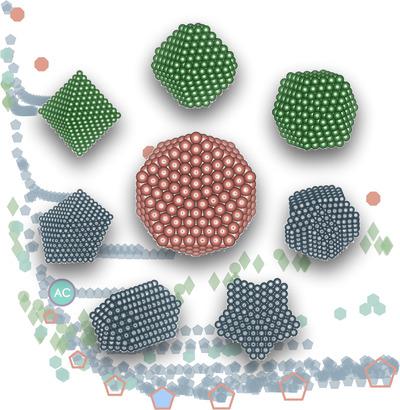当前位置:
X-MOL 学术
›
Acta Crystallogr. A Found. Adv.
›
论文详情
Our official English website, www.x-mol.net, welcomes your feedback! (Note: you will need to create a separate account there.)
Cluster-mining: an approach for determining core structures of metallic nanoparticles from atomic pair distribution function data.
Acta Crystallographica Section A: Foundations and Advances ( IF 1.8 ) Pub Date : 2020-01-01 , DOI: 10.1107/s2053273319013214 Soham Banerjee 1 , Chia Hao Liu 1 , Kirsten M Ø Jensen 2 , Pavol Juhás 3 , Jennifer D Lee 4 , Marcus Tofanelli 5 , Christopher J Ackerson 5 , Christopher B Murray 4 , Simon J L Billinge 1
Acta Crystallographica Section A: Foundations and Advances ( IF 1.8 ) Pub Date : 2020-01-01 , DOI: 10.1107/s2053273319013214 Soham Banerjee 1 , Chia Hao Liu 1 , Kirsten M Ø Jensen 2 , Pavol Juhás 3 , Jennifer D Lee 4 , Marcus Tofanelli 5 , Christopher J Ackerson 5 , Christopher B Murray 4 , Simon J L Billinge 1
Affiliation

|
A novel approach for finding and evaluating structural models of small metallic nanoparticles is presented. Rather than fitting a single model with many degrees of freedom, libraries of clusters from multiple structural motifs are built algorithmically and individually refined against experimental pair distribution functions. Each cluster fit is highly constrained. The approach, called cluster-mining, returns all candidate structure models that are consistent with the data as measured by a goodness of fit. It is highly automated, easy to use, and yields models that are more physically realistic and result in better agreement to the data than models based on cubic close-packed crystallographic cores, often reported in the literature for metallic nanoparticles.
中文翻译:

团簇挖掘:一种从原子对分布函数数据确定金属纳米颗粒核心结构的方法。
提出了一种寻找和评估小型金属纳米颗粒结构模型的新颖方法。与其使用多个自由度来拟合单个模型,不如通过算法并针对实验对分布函数分别构建来自多个结构基序的簇库。每个聚类拟合高度受限。该方法称为聚类挖掘,它返回所有与拟合优度所测得的数据一致的候选结构模型。它是高度自动化,易于使用的模型,与基于立方纳米堆积晶体核的模型(通常在文献中针对金属纳米颗粒的模型)相比,该模型在物理上更现实,并且与数据的一致性更好。
更新日期:2020-01-07
中文翻译:

团簇挖掘:一种从原子对分布函数数据确定金属纳米颗粒核心结构的方法。
提出了一种寻找和评估小型金属纳米颗粒结构模型的新颖方法。与其使用多个自由度来拟合单个模型,不如通过算法并针对实验对分布函数分别构建来自多个结构基序的簇库。每个聚类拟合高度受限。该方法称为聚类挖掘,它返回所有与拟合优度所测得的数据一致的候选结构模型。它是高度自动化,易于使用的模型,与基于立方纳米堆积晶体核的模型(通常在文献中针对金属纳米颗粒的模型)相比,该模型在物理上更现实,并且与数据的一致性更好。


























 京公网安备 11010802027423号
京公网安备 11010802027423号